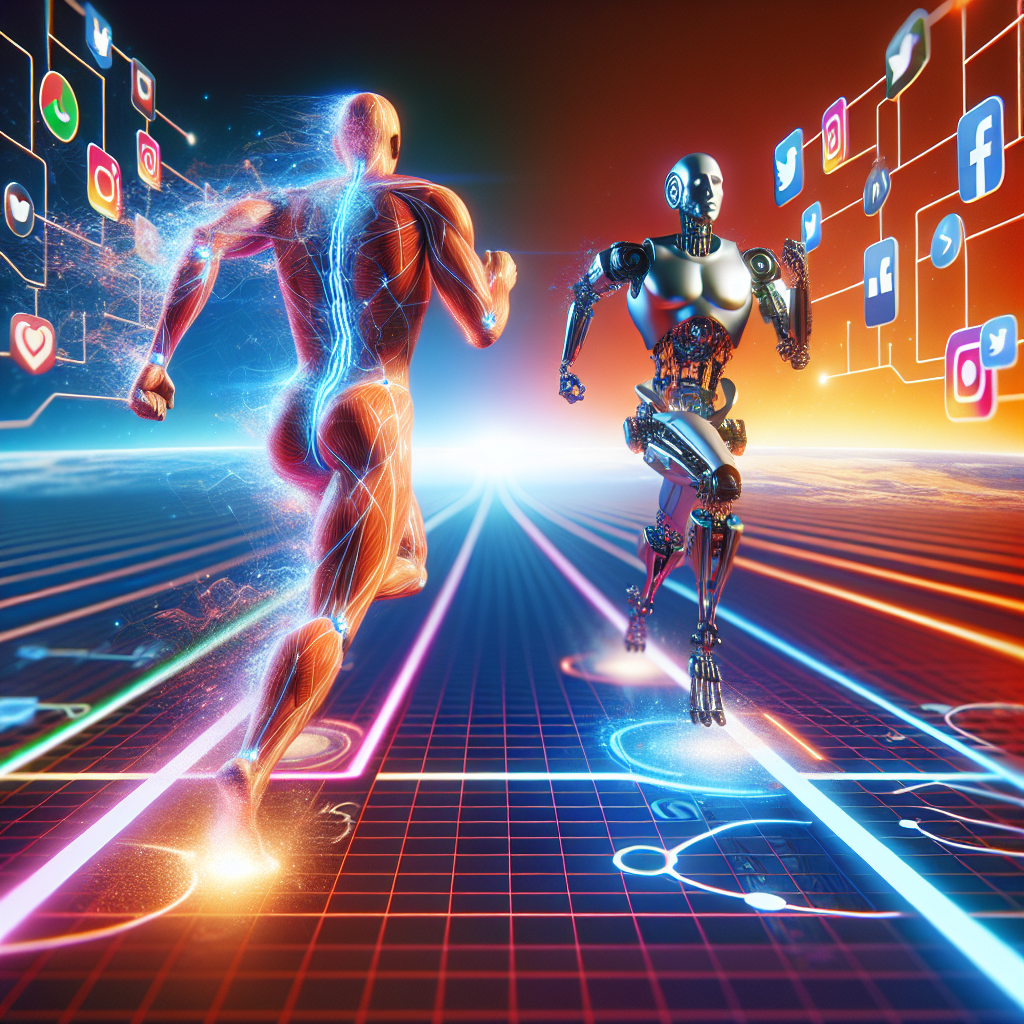In today’s digital age, social media has become an integral part of our daily lives. From connecting with friends and family to staying updated on the latest news and trends, social media platforms such as Facebook, Instagram, and Twitter have revolutionized the way we communicate and interact with each other. With the rise of artificial intelligence (AI) technology, there has been a growing debate on whether AI or humans are winning the social media race. In this article, we will explore the role of AI and humans in social media, their strengths and weaknesses, and ultimately, who is winning the social media race.
AI in Social Media
AI technology has been increasingly integrated into social media platforms to enhance user experience, personalize content, and improve efficiency. AI algorithms are used to analyze user data, predict user behavior, and deliver targeted advertisements and recommendations. AI-powered chatbots are also used to provide customer support and engage with users in real-time.
One of the key advantages of AI in social media is its ability to process large amounts of data quickly and efficiently. AI algorithms can analyze user engagement, sentiment analysis, and trends in real-time, allowing businesses to make data-driven decisions and tailor their marketing strategies accordingly. AI can also automate repetitive tasks, such as scheduling posts, responding to messages, and moderating content, freeing up human resources to focus on more strategic tasks.
AI also plays a crucial role in content curation and recommendation. Social media platforms use AI algorithms to analyze user preferences, behavior, and interests to recommend personalized content, products, and services. This helps improve user engagement, increase click-through rates, and ultimately drive conversions.
However, AI technology is not without its limitations. AI algorithms are only as good as the data they are trained on, and there is a risk of bias and inaccuracy in AI predictions and recommendations. AI algorithms can also lack the emotional intelligence and creativity that humans possess, which can impact the quality and authenticity of content.
Humans in Social Media
While AI technology has made significant advancements in social media, humans still play a crucial role in creating, curating, and engaging with content. Humans bring a unique perspective, creativity, and emotional intelligence that AI algorithms cannot replicate. Human content creators can tell stories, evoke emotions, and engage with audiences in a way that AI cannot.
Human interaction is also essential in building relationships and trust with users. Social media is ultimately a platform for human connections, and users are more likely to engage with content created by real people rather than AI-generated content. Authenticity, transparency, and empathy are key elements in building a loyal and engaged social media following.
Humans also play a vital role in social media moderation and community management. While AI algorithms can flag inappropriate content, humans are needed to make judgment calls, enforce community guidelines, and resolve conflicts. Human moderators can provide context, nuance, and empathy in dealing with sensitive and complex issues, which AI algorithms may struggle to understand.
Who’s Winning the Social Media Race?
So, who is winning the social media race: AI or humans? The answer is not so straightforward. While AI technology has made significant advancements in social media, humans still play a crucial role in creating authentic and engaging content, building relationships with users, and moderating social media platforms. Ultimately, the most successful social media strategies combine the strengths of AI technology with human creativity, empathy, and authenticity.
FAQs:
1. Can AI replace humans in social media?
While AI technology has made significant advancements in social media, it cannot fully replace humans. Humans bring a unique perspective, creativity, and emotional intelligence that AI algorithms cannot replicate. AI can enhance efficiency, personalize content, and automate repetitive tasks, but human creativity and authenticity are essential in engaging with users and building relationships.
2. How can businesses leverage AI and human input in social media?
Businesses can leverage AI technology to analyze user data, predict user behavior, and deliver targeted advertisements and recommendations. AI-powered chatbots can provide customer support and engage with users in real-time. However, businesses should also incorporate human creativity, empathy, and authenticity in content creation, community management, and relationship building on social media platforms.
3. What are the risks and challenges of using AI in social media?
One of the risks of using AI in social media is the potential for bias and inaccuracy in AI predictions and recommendations. AI algorithms are only as good as the data they are trained on, and there is a risk of algorithmic bias in content curation and recommendation. AI algorithms can also lack emotional intelligence and creativity, which can impact the quality and authenticity of content.
4. How can businesses ensure ethical AI use in social media?
Businesses should ensure ethical AI use in social media by being transparent about the use of AI technology, respecting user privacy, and addressing bias and discrimination in AI algorithms. Businesses should also provide human oversight and accountability in AI decision-making, and regularly monitor and evaluate the impact of AI on user experience and outcomes.
In conclusion, AI technology has made significant advancements in social media, enhancing user experience, personalizing content, and improving efficiency. However, humans still play a crucial role in creating authentic and engaging content, building relationships with users, and moderating social media platforms. The most successful social media strategies combine the strengths of AI technology with human creativity, empathy, and authenticity. Ultimately, the social media race is not about AI vs. humans, but about how AI and human input can work together to create meaningful and engaging experiences for users.

